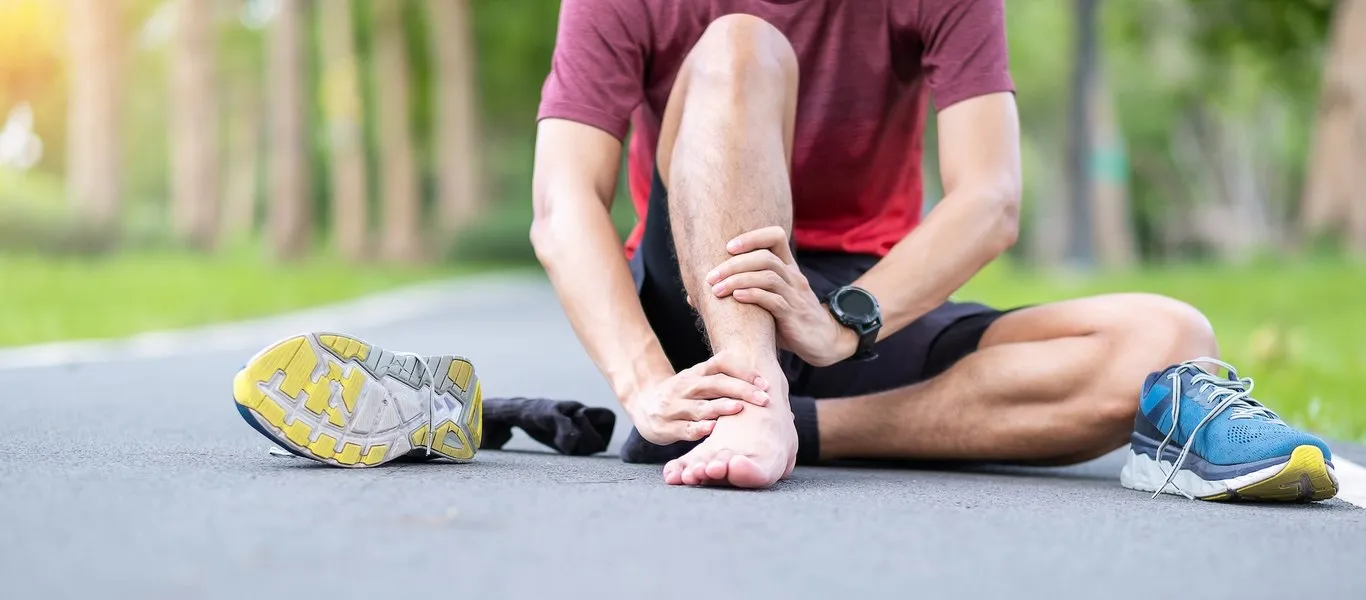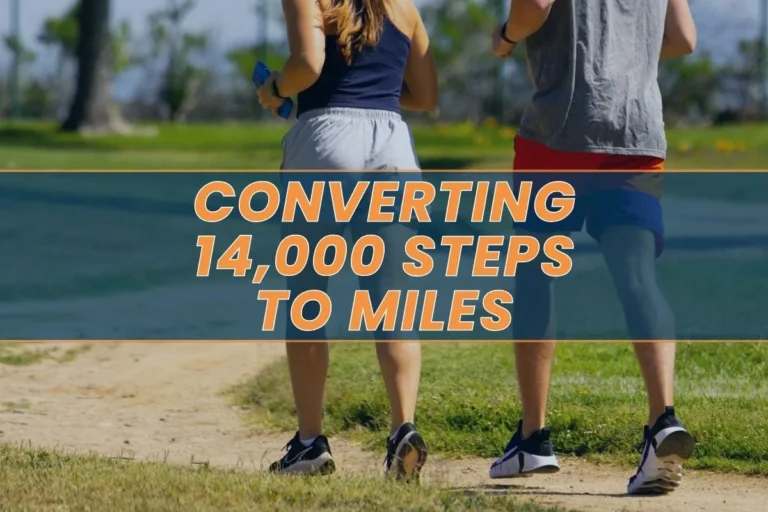Why Do My Calves Hurt When I Run? Reasons and Ways to Prevent Calf Pain
Running is a popular form of exercise, as it can be done almost anywhere and requires minimal equipment. But runners often wonder, “Why do my calves hurt when I run?”
It’s true that running can sometimes be painful, especially for the calves. In this blog post, we will discuss whether it is normal to feel pain due to running, the main reasons for calf pain, and how to relieve calf pain from running. Let’s get started!
If your calves hurt when running, it could be due to overuse, muscle tightness, medical conditions, or improper footwear. Make sure to properly stretch and warm up before your run, wear appropriate shoes, and gradually increase the intensity of your workouts to avoid injury.
Is It Normal to Feel Pain in the Calves Due to Running?
The calves are a crucial muscle group involved in running, providing power and stability. Let’s look more closely at the muscles that work during running and whether they can get hurt.
What Are the Calves?
The calves are the muscles located at the back of the lower leg. There are two main muscles that make up the calves: the gastrocnemius and the soleus. The gastrocnemius is the larger of the two calf muscles. It is responsible for plantarflexion, or pointing the toes downward. The soleus is located underneath the gastrocnemius and stabilizes the ankle joint. Both of these muscles work together to provide power and stability during running.
How Are the Calves Involved in Running?
The calves play a crucial role in running, as they help to propel the body forward. The calf muscles contract as the foot pushes off the ground, causing the ankle joint to extend and continue moving. This motion propels the body forward. In addition to providing power, the calves help stabilize the ankle joint and maintain balance.
The gastrocnemius and soleus are subjected to significant loading during running, especially with uphill or high-intensity running. The calves’ load can vary depending on factors such as running speed, terrain, and footwear. As a result, it is not uncommon to feel pain in the calves after running, especially if you are new to this activity or have increased your intensity or distance too quickly.
Why Do Calves Hurt After Running? 5 Main Causes
You may experience lower leg pain or inner calf pain from running. But why do calves hurt after running? Let’s explore the seven main causes of calf pain.
1. Overuse
Overuse is one of the most common causes of sore calves after running. It happens when you push yourself too hard or increase the intensity of your running routine too quickly. Overuse can lead to injuries such as muscle strains, shin splints, and tendinitis, which can cause calf pain. To avoid overuse, start slowly and gradually increase your running routine’s intensity.

2. Dehydration
Dehydration can cause calf pain during and after running. When you are dehydrated, your muscles lose fluids, making them more susceptible to cramping and tightening. To prevent dehydration, drink enough water before, during, and after your running session.
3. Tight Muscles
Tight muscles are another common cause of calf pain after running. When your muscles are too tight, they can’t absorb shock properly, leading to strain and injury. To prevent tight muscles, make sure you stretch before and after your running session. You can also try foam rolling to loosen up your muscles.
4. Incorrect Footwear
Wearing the wrong shoes can also lead to calf pain. Shoes that lack proper support or don’t fit well can cause your feet to overpronate or under pronate, leading to calf pain and other injuries. Wear running shoes that fit well and provide adequate support to avoid this.
5. Lack of Warm-Up
Skipping a proper warm-up before running can also cause calf pain. When you don’t warm up, you start your run with stiff and cold muscles, making them more prone to injury. To prevent calf pain caused by a lack of warm-up, spend at least five minutes doing dynamic stretches to loosen up your muscles.
Why Do My Calves Hurt While Running? 6 Reasons for Pain
We’ve discussed the main reasons for a sore calf after running, but there are also reasons that your calves can hurt during exercise.
1. Poor Running Form
Poor running form can also contribute to calf pain. If you run improperly, you may be putting extra strain on your calves. For example, if you are overstriding, your feet may land too far in front of your body, causing your calves to work harder when they push off. To improve your running form, focus on shortening your stride and landing with your feet under your body.
2. Muscle Imbalances
If one muscle group is stronger than another, it can cause extra strain on the weaker muscles. This can lead to soreness and pain during running. Muscle imbalances can also lead to calf pain. To avoid muscle imbalances, incorporate strength training exercises into your workout routine.
3. Electrolyte Imbalances
Electrolyte imbalances can also contribute to calf pain during running. Electrolytes such as sodium, potassium, and magnesium are important for muscle function. If you’re not getting enough of these nutrients, your muscles can cramp and become painful. Consuming electrolyte-rich foods and drinks can help prevent these issues.
4. Muscle Strains
In some cases, calf pain during running can be caused by muscle strains. Strains occur when the muscle fibers are stretched or torn, which can be painful. To prevent muscle strains, ensure you warm up properly before each run and gradually increase your running loads and mileage.

5. Peripheral Artery Disease
Peripheral artery disease is a condition that causes poor blood circulation in the legs and feet. This can cause calf pain during running, as well as other symptoms such as numbness and tingling. To prevent peripheral artery disease, make sure you’re living a healthy lifestyle and managing any underlying medical conditions.
6. Compartment Syndrome
Compartment syndrome is a condition that occurs when pressure builds up within a muscle compartment. It can cause pain and other symptoms. In some cases, compartment syndrome can be caused by overuse. To prevent compartment syndrome, make sure you’re giving your body enough rest between runs and gradually increasing loads.
When Is Calf Pain a Problem?
Various factors, including overuse, muscle strain, and injury, can cause calf pain. In many cases, the pain will be mild and go away on its own with some rest and self-care. However, there are some instances where calf pain can be a sign of a more severe issue, such as a blood clot or deep vein thrombosis (DVT). These conditions can be life-threatening if not treated promptly.
When to Seek Medical Attention
It is important to seek medical attention if you experience severe calf pain that does not improve with rest and self-care, or if you notice any other concerning symptoms. These may include swelling, redness, or warmth in the affected area and difficulty walking or standing. If you have a history of blood clots or are at an increased risk for DVT, it is especially important to seek medical attention if you experience calf pain.
Prevention and Self-Care
In many cases, calf pain can be prevented with proper stretching, warm-up, and cool-down routines before and after exercise. Staying hydrated and wearing appropriate footwear during physical activity is also important. If you experience mild calf pain, self-care techniques such as rest, ice, compression, and elevation (the RICE method) can effectively reduce pain and promote healing. However, it is important to seek medical attention if the pain does not improve or you notice any concerning symptoms.
Top 3 Tips How to Prevent Calf Pain after Running
Calf pain is a common problem for runners, especially those just starting out or increasing their distance. Let’s discuss some top tips for how to prevent sore calves from running and some equipment and accessories that can help.
1. Stretching and Strengthening Exercises
One of the best ways to prevent calf pain after running is to incorporate stretching and strengthening exercises into your routine. Stretching exercises such as calf raises and toe touches can help to increase flexibility in the calf muscles while strengthening exercises such as heel drops and squats can help to build strength and endurance. Incorporating these exercises into your warm-up and cool-down routines can help to prevent calf pain and injuries.
2. Proper Footwear
Wearing the proper footwear is essential for preventing calf pain after running. Running shoes that are too old or worn out can be a cause of pain in the calf after running, as well as other injuries. Investing in a good pair of running shoes that provide proper support, cushioning, and stability is important. Additionally, some runners may benefit from wearing compression socks or calf sleeves during their runs, which can help to improve blood flow and reduce muscle soreness.
3. Equipment and Accessories That Can Help
Foam rollers and massage balls are great tools for preventing calf pain and speeding recovery. Using a foam roller to roll out your calf muscles before and after your runs can help to increase blood flow and reduce muscle tension. Similarly, using a massage ball to target specific areas of your calf muscles can help to relieve soreness and prevent injury.
You can also use compression sleeves and calf stretchers. Compression sleeves can help improve circulation and reduce muscle fatigue, which can help prevent lower calf pain when running. They can also help reduce swelling and inflammation. A calf stretcher is a simple device that can help you stretch your tight calves after running. It can be especially useful for runners with tight or inflexible calf muscles.
Subscribe to Our Running Newsletter!
Get free running tips from renowned professional athletes and discounts from top-notch brands.
5 Factors Which indicate you have Calf Injuries: What to Do
Calf injuries are common among runners, but recognizing the early signs of an injury and taking appropriate action can prevent further damage and ensure a speedy recovery. Here are five common calf injuries in runners, as well as tips for treatment and rehabilitation.
1. Strains
Calf strains are one of the most common injuries in runners. Symptoms include sudden pain or tightness in the calf muscle, swelling, and difficulty walking or running. You can perform the “squeeze test” to identify a calf strain. This involves squeezing the calf muscle with your fingers to see if it causes pain. Treatment for calf strains involves RICE, stretching, and strengthening exercises. In severe cases, physical therapy may be necessary.
2. Achilles Tendonitis
Achilles tendonitis is an injury that affects the Achilles tendon, which joins the calf muscle to the heel bone. Its symptoms include pain and stiffness in the back of the calf, especially in the morning or after prolonged periods of sitting or standing. To identify Achilles tendonitis, you can perform the “heel raise test.” This involves standing on your tiptoes and lowering your heels to see if it causes pain in the Achilles tendon. Treatment for Achilles tendonitis involves RICE, stretching, and strengthening exercises. In severe cases, a walking boot or surgery may be necessary.
3. Shin Splints
Shin splints are an injury to the shinbone and the surrounding muscles and tendons. Symptoms include pain and tenderness along the front of the shin, especially during or after running. To identify shin splints, you can perform the “hop test.” This involves hopping on one foot and seeing if it causes pain in the shin. Treatment for shin splints includes RICE, stretching, medical massage, and strengthening exercises. In severe cases, physical therapy or a walking boot may be necessary.
4. Plantar Fasciitis
Plantar fasciitis is an injury that affects the plantar fascia, a thick band of tissue that runs along the bottom of the foot. Symptoms include pain and stiffness in the heel and arch of the foot, especially in the morning or after prolonged periods of sitting or standing. To identify plantar fasciitis, you can perform the “toe raise test.” This involves standing on your tiptoes and seeing if it causes pain in the bottom of the foot. Treatment for plantar fasciitis involves RICE, stretching, and therapy exercises. In severe cases, a walking boot or surgery may be necessary.
5. Calf Tears
Calf tears are a more severe injury that can occur when the calf muscle is partially or completely torn. Symptoms include sudden pain or popping in the calf, swelling, and difficulty walking or running. You can perform the “calf raise test” to identify a calf tear. This involves standing on your tiptoes and seeing if it causes pain in the calf. Treatment for calf tears involves RICE, immobilization, and physical therapy. In severe cases, surgery may be necessary.
5 Ways How to Prevent Calf Injuries
Calf injuries can be painful and frustrating, but they can also be prevented. Incorporating these five strategies into your routine can help you reduce the risk of calf injuries and stay in the game.
1. Proper Warm-Up
One of the most effective ways to prevent calf injuries is to warm up properly before engaging in physical activity. A proper warm-up can help reduce the risk of calf injuries by increasing blood flow and flexibility. A good warm-up should include dynamic stretches that target the calf muscles. Examples of dynamic stretches include calf raises, lunges, and leg swings.
2. Strength Training
Strength training can also help prevent calf injuries. Strong calf muscles are less likely to become strained or pulled during physical activity. Exercises such as toe raises and squats can help strengthen the calf muscles. It is important to gradually increase the intensity and frequency of strength training to avoid injury.
3. Proper Footwear
Wearing proper footwear can make a significant difference in preventing calf injuries. The right footwear can help absorb shock and reduce strain on the calf muscles. Athletic shoes should provide sufficient support and cushioning for the feet and ankles. It is also important to replace shoes when they become worn or lose their support.
4. Rest and Recovery
Rest and recovery are crucial for preventing calf injuries. Overuse and fatigue can increase the risk of sore calves after running. It is important to listen to your body and take appropriate rest days between workouts. Adequate sleep and nutrition can also help with recovery and reduce the risk of injury.
5. Stretching
Stretching is another important way to prevent calf injuries. Static stretches can help improve flexibility and reduce the risk of muscle strains. Examples of static stretches include the standing calf stretch, seated calf stretch, and wall stretch. It is important to stretch after each workout and hold each stretch for at least 30 seconds.
Frequently Asked Questions about Calf Pain During Running
Can You Run with a Calf Strain?
If you have a calf strain, it’s important to take care of it properly to prevent further injuries. Running with a calf strain is not recommended, as it can worsen the injury and delay the healing process. Instead, focus on RICE to reduce swelling and pain. Consult with a healthcare professional before resuming your running routine.
Should I Run with Calf Pain?
Running through calf pain can make the injury worse and prolong your recovery time. Taking a break from running until the pain subsides is best, then gradually ease back into your routine. Remember to stretch and warm up properly before each run to prevent future injuries.
Final Thoughts about Calf Pain During Running
It is normal to have your calves sore 3 days after running. The calves are one of the main muscle groups that work during running, and the amount of load placed on them can vary depending on running speed, terrain, and footwear, ultimately resulting in pain and discomfort. Remember to stretch your calves before and after running and take rest days to allow your muscles to recover.
While calf pain is a common issue, it is important to know when it may be a sign of a more serious problem. If you experience severe or persistent calf pain or other symptoms, seeking medical attention promptly is highly recommended. With proper prevention, self-care techniques, and timely medical intervention (when necessary), calf pain can be effectively managed.
Have you ever had pain in your calf after running? Please share your experience in the comments below.
Also read:
- How Much Running Is Too Much
- Running Twice a Day
- Does Running Make You Lose Muscle
- Running With Ankle Weights
- Average Running Speed
- Running With Glasses
- Does Running Build Glutes
- Running 3 Miles a Day
References:
- Peripheral arterial disease: diagnosis and management // NCBI: https://www.ncbi.nlm.nih.gov/books/NBK553733/
- Compartment Syndrome: Diagnosis, Management, and Unique Concerns in the Twenty-First Century // PMC: https://www.ncbi.nlm.nih.gov/pmc/articles/PMC4071472/
- What Is the RICE Method for Injuries? // WebMD: https://www.webmd.com/first-aid/rice-method-injuries
- The Assessment, Management and Prevention of Calf Muscle Strain Injuries: A Qualitative Study of the Practices and Perspectives of 20 Expert Sports Clinicians // PMC: https://www.ncbi.nlm.nih.gov/pmc/articles/PMC8761182/
- Achilles tendinopathy: a guide for general practice // PMC: https://www.ncbi.nlm.nih.gov/pmc/articles/PMC7594829/
- Shin splints: painful to have and to treat // PubMed: https://pubmed.ncbi.nlm.nih.gov/17435274/
- Evaluation and Treatment of Chronic Plantar Fasciitis // PMC: https://www.ncbi.nlm.nih.gov/pmc/articles/PMC8564931/
- Gastrocnemius vs. soleus strain: how to differentiate and deal with calf muscle injuries // PMC: https://www.ncbi.nlm.nih.gov/pmc/articles/PMC2697334/
If you have any questions or suggestions, you can contact us via email – [email protected]






